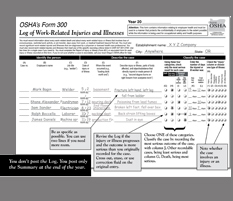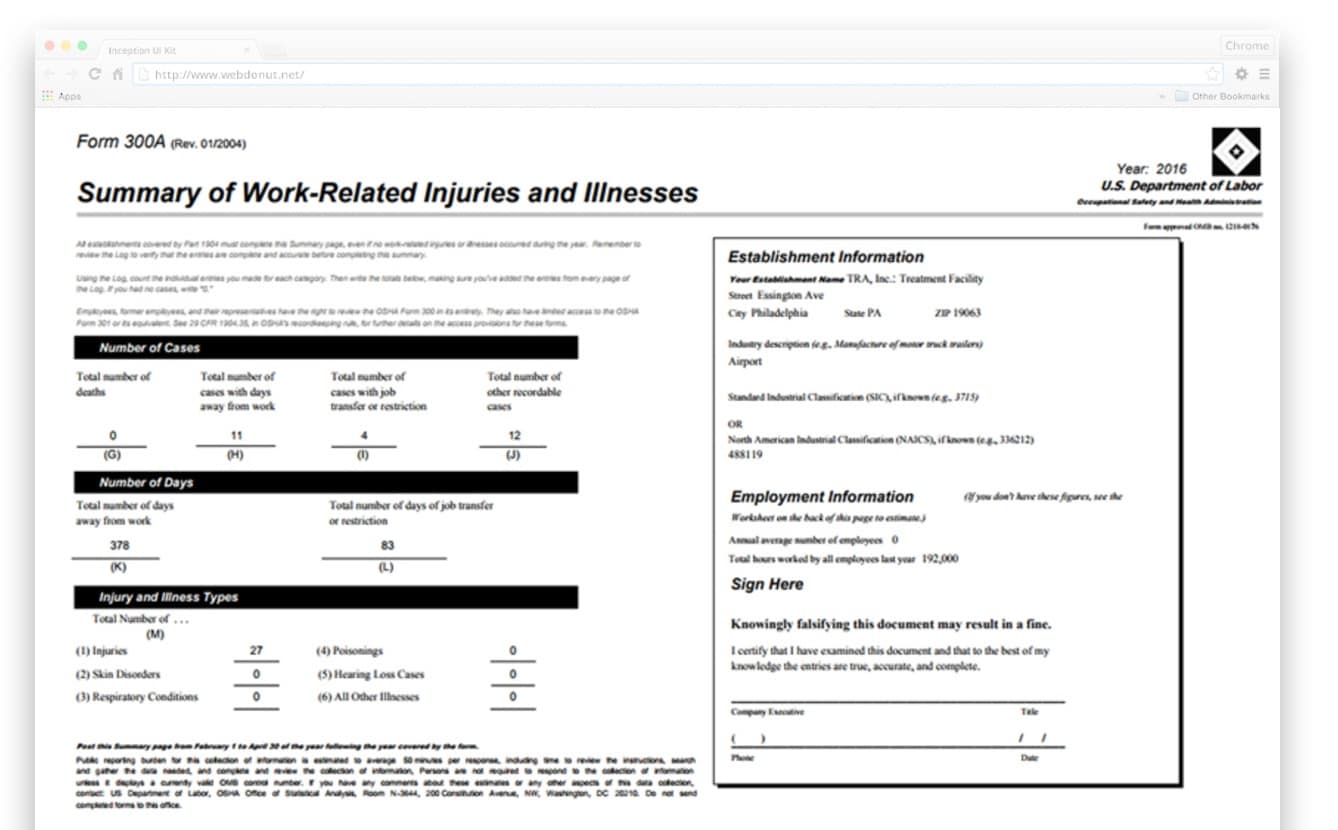Today, we are going to talk about a topic that is crucial for employers to understand: OSHA 300 Logs. These logs are a critical part of workplace safety, as they help employers track and record workplace injuries and illnesses. By properly maintaining these logs, employers can identify trends, create preventive measures, and ensure the overall well-being of their workforce. Unfortunately, there are a few common mistakes that employers often make when it comes to OSHA 300 Logs. Let’s take a closer look.
Mistake 1: Incomplete or Inaccurate Recording
One of the primary mistakes employers make is failing to accurately record all work-related injuries and illnesses. It is crucial to document every incident, no matter how minor it may seem at the time. For example, if an employee experiences a minor cut or a sprained ankle, it might not be immediately evident how serious the injury is. However, it’s essential to log these incidents just in case they escalate into more severe complications.
 By accurately recording all incidents, employers can track patterns and identify areas where improvements in safety protocols are needed. This information can be invaluable in reducing future injuries and creating a safer work environment for everyone.
By accurately recording all incidents, employers can track patterns and identify areas where improvements in safety protocols are needed. This information can be invaluable in reducing future injuries and creating a safer work environment for everyone.
Mistake 2: Failure to Maintain OSHA 300 Logs for the Required Timeframe
Another mistake employers often make is not keeping the OSHA 300 Logs for the required timeframe. According to OSHA regulations, employers must maintain these logs for a minimum of five years. Failing to do so can result in citations and penalties if an OSHA inspection uncovers this oversight.
 Therefore, it is crucial that employers implement effective record-keeping systems and ensure that the logs are protected and accessible for the required timeframe. This includes protecting the information from damage or loss due to factors such as fire, water, or theft.
Therefore, it is crucial that employers implement effective record-keeping systems and ensure that the logs are protected and accessible for the required timeframe. This includes protecting the information from damage or loss due to factors such as fire, water, or theft.
Mistake 3: Not Posting the OSHA 300A Summary
After compiling the information from the OSHA 300 Logs, employers are required to post a summary known as the OSHA 300A. This summary must be displayed in a common area where employees have easy access to it. Failing to post this summary is a common mistake that employers make, often unknowingly.
 The OSHA 300A summary provides a snapshot of the injuries and illnesses that occurred throughout the year. By posting this information, employers demonstrate transparency and commitment to workplace safety. It also allows employees to be aware of the potential hazards and take necessary precautions.
The OSHA 300A summary provides a snapshot of the injuries and illnesses that occurred throughout the year. By posting this information, employers demonstrate transparency and commitment to workplace safety. It also allows employees to be aware of the potential hazards and take necessary precautions.
Mistake 4: Lack of Employee Involvement
One crucial aspect that employers often neglect is involving employees in the process of maintaining OSHA 300 Logs. Employees are a valuable resource when it comes to identifying potential hazards and suggesting improvements to prevent future incidents.
 By fostering a culture of open communication and employee involvement, employers can gather more accurate and detailed information for the OSHA 300 Logs. Regular safety meetings, hazard identification programs, and anonymous reporting systems are just a few ways to encourage employees to actively contribute to maintaining a safe work environment.
By fostering a culture of open communication and employee involvement, employers can gather more accurate and detailed information for the OSHA 300 Logs. Regular safety meetings, hazard identification programs, and anonymous reporting systems are just a few ways to encourage employees to actively contribute to maintaining a safe work environment.
In conclusion, understanding and avoiding these common mistakes can greatly benefit employers in maintaining accurate and compliant OSHA 300 Logs. By recording all incidents, maintaining records for the required timeframe, posting the OSHA 300A summary, and involving employees in the process, employers can create a safer workplace, prevent future incidents, and comply with OSHA regulations. Remember, workplace safety is a shared responsibility, and addressing these mistakes is an essential step towards ensuring the well-being of all employees.